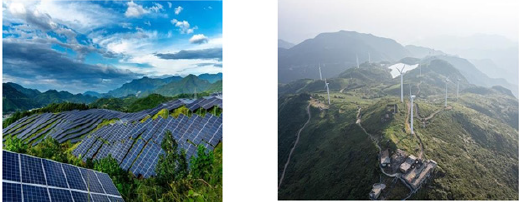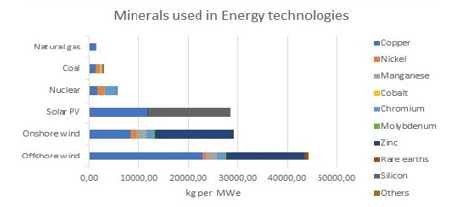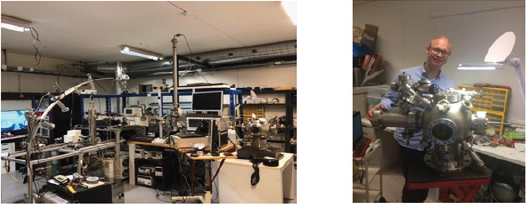- Submissions

Full Text
Aspects in Mining & Mineral Science
Obligation to Provide Sustainability for Future Generations
Zeiner Gundersen DH*
Principal at Norrønt AS & Aiomatics AS Oslo, Norwegian University of Science and Technology (NTNU), Norway
*Corresponding author: Dag Herman Zeiner Gundersen, Principal at Norrønt AS & Aiomatics AS Oslo, Norwegian University of Science and Technology (NTNU), Oslo, Norway
Submission: August 12, 2021;Published: August 19, 2021

ISSN 2578-0255Volume7 Issue2
Opinion
Dr. Dag H. Zeiner-Gundersen states that Norway has through the last decades built most of its wealth on exploitation of non-renewable energy sources in form of oil and gas. With emissions, global warming, and environmental changes highly caused by burning of such fossil fuels, it is his opinion that there is a special duty to funnel wealth earned from such exploitation back into developing and enhancing renewable energy sources. The “low hanging fruits” that create real disruptive innovations are becoming less common within the field of renewable energy and sustainable solutions. In my opinion, increased basic research is required and to a degree beyond merely application engineering of existing technologies (Figure 1). Norway, as for many large energy nations, has too many non-sustainable “pearl” energy projects, too many “bread and butter” renewable research projects and too few sustainable disruptive “oyster” projects. Such “oyster” projects are those that will bring quantum leaps, if successful. I believe our current energy development thinking is too risk avert, short term driven, application engineering oriented, versus the need for real technology drivers.
Figure 1: To the left, is a simplistic illustrative diagram, that can typically be used for categorizing national and corporate renewable energy research projects. To the right, typical estimated energy cost versus type of technology.

Sustainable renewable energy solutions
I believe that now is the time to deliver on sustainability projects with new disruptive energy solutions that will require fundamental R&D. We must stretch our thinking beyond standard solutions and forward substantial research and financial resources for nuclear fission, nuclear fusion, muon catalyst fusion, energy extraction from Hydrogen, wind, solar cells, bio energy, geothermal, ocean, tidal and hydro power solutions, and even explore none-conventional and controversial technologies. More emphasis should be put on selecting energy technologies; real lifetime cycle cost scrutiny, environmental impact, including land alterations. The relative high need for more specialized metals in some of the renewable technologies are introducing dilemmas as general availability, exploitation and refining methods, transportation, to geopolitical issues. Although reputationally it has a challenge, the nuclear industry has a very low number of accidents and fatalities and releases operationally less radiation and harmful emittance into the environment than any other major energy source (Figures 2 & 3). Nuclear has in general higher availability, longer lifetime, lower relative use of speciality metals and higher reliability factor than any other energy source. Solutions with simpler, safer, cost-effective versions should be explored, combined use of decentralized units offloading transmission networks.
Figure 2: To the left a Solar field development and to the right a wind turbine park. These ambitious implementations, results in many none-reversible alterations to the nature.

Figure 3: Highlights metals used in various energy technologies, relative to energy output. Source; IEA, with a chart conversion.

With the current escalating environmental changes all means should be put into disruptive renewable energy research in my opinion. In this context, I have contributed R&D with a close team of scientists during the last six years on various forms of disruptive Hydrogen energy processes, including complex work on processes for converting Hydrogen forms into diverse atomic particles. All executed in a purpose built, advanced privately held laboratory (Figures 4 & 5). Conversion processes of Hydrogen have the potential for disruptive innovative solutions. The team´s project work has primarily been financed by me and my company, with some additional private investments and grant supports.
Figure 4: Artist impression of a projected unconventional nuclear MW/GW facility, intended for decentralized usage.

Figure 5: Pictures from the author´s energy research lab. Left picture, mid position, shows a Hydrogen generator in test. Right picture, Phd.c Sindre A. Zeiner-Gundersen with a research generator.

Financing
My opinion is that revenues from oil and gas should be far more directly channeled into disruptive fundamental energy research. Further, national and global grants and corporate and investors tax benefits should be valued on project environmental impact factors. Channeling such increased financials through existing grant organizations might not be as effective reflecting their current required policy portfolio. More effective models and processes for selecting and executing R&D projects must be sought, reducing resources used on applications, accounting, and auditors.
Effective project practices brings technological results
In addition to changing financing methods, I believe more effective project execution processes and resource usage must be sought. We must get out of the comfort zone and utilize nontraditional and innovative methods and resources such as AI driven innovation and R&D algorithms and multi scientific collaboration forums. University research labs should be far more available for usage in projects combined with common incentives mechanisms. High earning requirements put on universities, charging highly for use of speciality facilities and man-hours, might result in detaching potential collaboration, going abroad, or building own facilities. With an increased number of “oyster” R&D sustainable energy projects, there is inherently a higher risk of failures (Figure 6). Grant givers, investors, universities, and corporations, reasonably addressing such risks deserve increased recognition. The author’s book: Effective innovation in science technology and business, Amzon.com, includes noticeably more details on project executions.
Figure 6: To the left shows a simplistic, although relatively effective, AI driven innovation and R&D algorithm from our BINOM.digital, exhibiting a beneficial HMI interface. To the right the alteration 10Z-1 rule. A graphical presentation showing the cost of adjusting technology and R&D efforts versus project development stages.

Summary
I believe that Norway and large energy nations have a responsibility in driving fundamental disruptive research on renewable energy. Goals on capping emissions are noble, but effectual complex to enforce and are definitively insufficient. As the world gets more and more populated and escalating demands for comfort and energy usages, we are obliged to push and finance fundamental renewable energy research forward. - No time to spare.
© 2021 Zeiner Gundersen DH. This is an open access article distributed under the terms of the Creative Commons Attribution License , which permits unrestricted use, distribution, and build upon your work non-commercially.
 a Creative Commons Attribution 4.0 International License. Based on a work at www.crimsonpublishers.com.
Best viewed in
a Creative Commons Attribution 4.0 International License. Based on a work at www.crimsonpublishers.com.
Best viewed in 







.jpg)






























 Editorial Board Registrations
Editorial Board Registrations Submit your Article
Submit your Article Refer a Friend
Refer a Friend Advertise With Us
Advertise With Us
.jpg)






.jpg)














.bmp)
.jpg)
.png)
.jpg)










.jpg)






.png)

.png)



.png)






